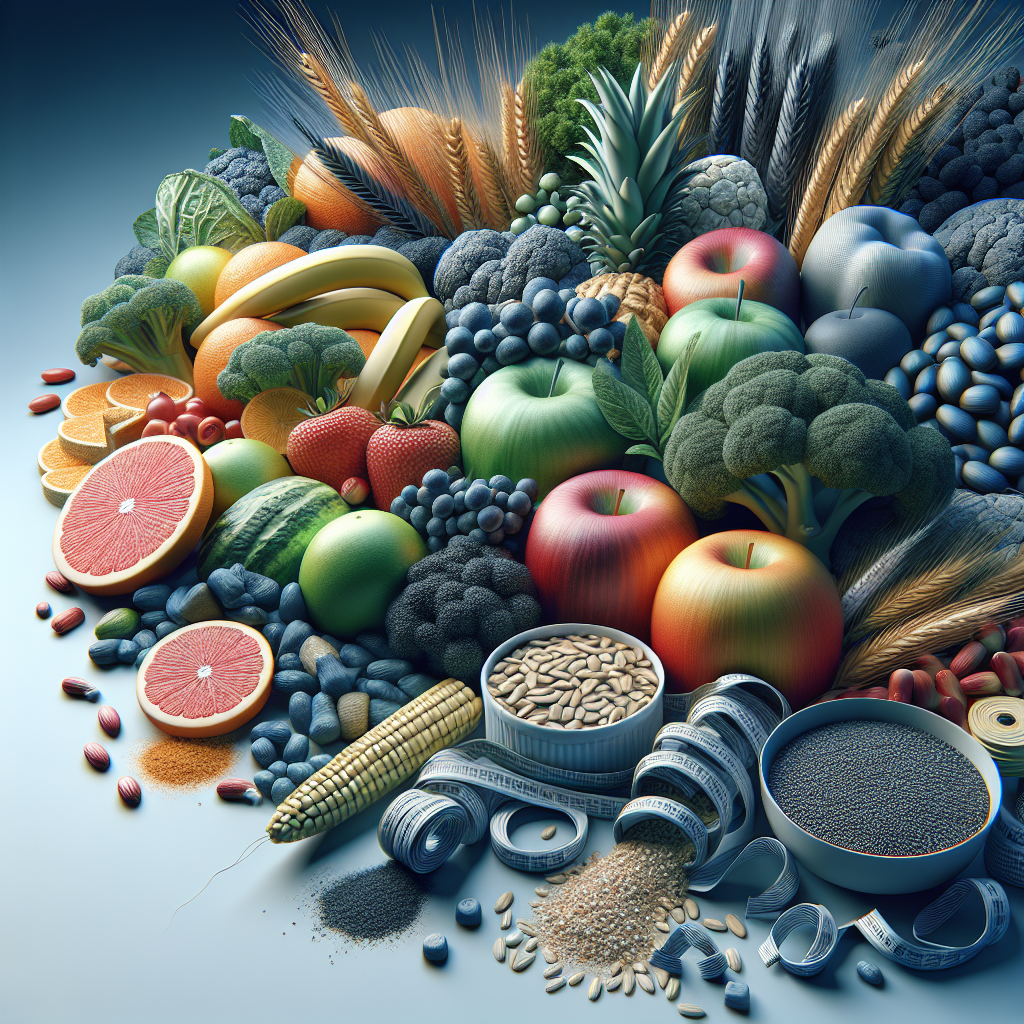Adopting a diet that complements your fitness routine is essential for optimizing performance, recovery, and overall well-being. Fitness-friendly diets are designed to provide the necessary nutrients to support an active lifestyle while also promoting muscle repair and fat loss. This article will delve into the crucial nutritional guidelines to create a balanced diet that aligns with your fitness objectives, illustrating how to maximize your nutritional intake effectively.
Understanding the Core Nutritional Components
In crafting a fitness-friendly diet, understanding macronutrients and micronutrients is vital. Here’s a breakdown:
-
Macronutrients: These supply energy and support bodily functions. They include:
- Carbohydrates
- Proteins
- Fats
- Micronutrients: Essential vitamins and minerals that aid in various bodily processes, including recovery and energy metabolism.
Macronutrient Distribution
Understanding the distribution of macronutrients is key to developing a nutrition strategy that supports both fitness goals and daily energy needs.
| Macronutrient | Recommended Daily Intake (%) | Sources |
|---|---|---|
| Carbohydrates | 45-65% | Whole grains, fruits, vegetables |
| Proteins | 10-35% | Lean meats, dairy, legumes |
| Fats | 20-35% | Nuts, olive oil, avocados |
Calculating Your Caloric Needs
To successfully follow a nutrition plan, understanding your total daily energy expenditure (TDEE) is necessary.
-
Basal Metabolic Rate (BMR): Use the Mifflin-St Jeor equation to estimate your BMR:
- For men: ( BMR = 10 \times \text{weight (kg)} + 6.25 \times \text{height (cm)} – 5 \times \text{age (years)} + 5 )
- For women: ( BMR = 10 \times \text{weight (kg)} + 6.25 \times \text{height (cm)} – 5 \times \text{age (years)} – 161 )
-
Physical Activity Level (PAL): Multiply your BMR by a factor depending on your activity level:
- Sedentary (little or no exercise): BMR × 1.2
- Lightly active (light exercise/sports 1-3 days a week): BMR × 1.375
- Moderately active (moderate exercise/sports 3-5 days a week): BMR × 1.55
- Very active (hard exercise/sports 6-7 days a week): BMR × 1.725
- Extra active (very hard exercise/sports & a physical job): BMR × 1.9
Example Calculation
For a 30-year-old male, 180 cm tall, weighing 75 kg, moderately active:
- Calculate BMR:
- ( BMR = 10 \times 75 + 6.25 \times 180 – 5 \times 30 + 5 = 1,750 ) kcal/day
- Calculate TDEE:
- ( TDEE = BMR \times 1.55 = 2,712.5 ) kcal/day
Tailoring Macronutrient Ratios
Once you know your TDEE, tailoring the macronutrient ratios is essential. Here’s how to calculate your intake based on a caloric goal.
Example for a 2,700-kcal diet
-
Carbohydrates (55%):
- ( 2,700 \times 0.55 = 1,485 ) kcal from carbohydrates.
- Grams: ( 1,485 / 4 = 371 ) grams.
-
Proteins (25%):
- ( 2,700 \times 0.25 = 675 ) kcal from proteins.
- Grams: ( 675 / 4 = 169 ) grams.
- Fats (20%):
- ( 2,700 \times 0.20 = 540 ) kcal from fats.
- Grams: ( 540 / 9 = 60 ) grams.
Choosing High-Quality Carbohydrates
Carbohydrates should be the foundation of any fitness-friendly diet. Choosing whole, nutrient-dense sources can optimize performance.
-
Complex Carbohydrates: These provide sustained energy and fibre, which helps in digestion.
- Examples: Brown rice, quinoa, oatmeal, and sweet potatoes.
- Simple Carbohydrates: Best consumed post-workout to replenish glycogen stores.
- Examples: Fruits like bananas and berries, honey, and sports drinks.
Recommended Daily Intake of Carbohydrates
| Source | Serving Size | Carbohydrates |
|---|---|---|
| Oatmeal | 1 cup cooked | 27g |
| Sweet Potato | 1 medium | 23g |
| Quinoa | 1 cup cooked | 39g |
| Brown Rice | 1 cup cooked | 45g |
The Role of Protein in Muscle Recovery
Protein is crucial for muscle repair and growth. It helps repair tissue damaged during exercise and is vital for overall recovery.
Recommendations for Protein Intake
- General Guidelines: Aim for 1.2 to 2.0 grams of protein per kilogram of body weight, depending on your training intensity.
| Activity Level | Protein Requirement (g/kg) |
|---|---|
| Sedentary | 0.8 |
| Light activity | 1.0 |
| Moderate activity | 1.2 – 1.6 |
| Heavy training | 1.6 – 2.0 |
High-Quality Protein Sources
- Animal-Based: Chicken, turkey, lean beef, fish, eggs, dairy products.
- Plant-Based: Lentils, chickpeas, quinoa, edamame, tofu.
Healthy Fats: Essential for Hormonal Balance
Fats are another critical component of a fitness-friendly diet. They play a vital role in hormonal production and the absorption of fat-soluble vitamins.
Types of Healthy Fats
- Monounsaturated Fats: Found in olive oil, avocados, and nuts. Beneficial for heart health.
- Polyunsaturated Fats: Omega-3 and Omega-6 fatty acids found in fatty fish, flaxseeds, and walnuts.
- Saturated Fats: Should be consumed in moderation, mostly from healthy sources like coconut oil.
Recommended Daily Intake of Fats
| Source | Serving Size | Fats |
|---|---|---|
| Avocados | 1 medium | 22g |
| Olive Oil | 1 tablespoon | 14g |
| Almonds | 1 oz (23 nuts) | 14g |
| Salmon | 3 oz | 10g |
Micronutrients: The Unsung Heroes
Micronutrients play essential roles in energy production and immune function. Key vitamins and minerals to focus on include:
- Vitamin D: Important for bone health and immune function. Sources include sunlight exposure, fatty fish, and fortified foods.
- Calcium: Vital for muscle contraction and bone strength. Found in dairy products, green leafy vegetables, and fortified plant-based milks.
- Iron: Crucial for oxygen transport in the body. Sources include red meat, lentils, beans, and spinach.
Daily Recommended Intake of Key Micronutrients
| Nutrient | Men (mg) | Women (mg) | Sources |
|---|---|---|---|
| Calcium | 1000 | 1000 | Dairy, greens |
| Iron | 8 | 18 | Meat, beans |
| Vitamin D | 600 | 600 | Fish, sunlight |
Hydration: The Cornerstone of Performance
Keeping hydrated is an essential aspect of any fitness-friendly diet. Water supports every cell in the body, aids in digestion, and regulates body temperature.
Hydration Guidelines
- General Recommendation: Aim for at least 2 to 3 liters of water a day, adjusting based on physical activity and weather conditions.
- Signs of Dehydration: Thirst, dark urine, fatigue, dizziness.
Timing Nutrition for Optimal Performance
Strategic nutrient timing can significantly enhance athletic performance and recovery.
Pre-Workout Nutrition
Focus on carbohydrates to fuel your workout. Consume a meal rich in complex carbs and moderate protein about 2-3 hours before exercising.
Example Pre-Workout Snack:
- Greek yogurt with berries
- Whole-grain toast with almond butter
Post-Workout Nutrition
Post-exercise meals are crucial for replenishing glycogen stores and repairing muscle tissue. Aim to consume a mix of carbs and protein within 30-60 minutes of working out.
Example Post-Workout Meal:
- Grilled chicken with brown rice and vegetables
- Protein shake with a banana
Sample Weekly Meal Plan
Creating a structured meal plan helps ensure nutrient variety while meeting your specific dietary goals. Below is a sample weekly plan.
Day 1
- Breakfast: Overnight oats with chia seeds and mixed berries
- Lunch: Quinoa salad with chickpeas, cucumbers, and feta
- Dinner: Grilled salmon with sweet potato and asparagus
Day 2
- Breakfast: Scrambled eggs with spinach and whole grain toast
- Lunch: Turkey wrap with avocado and mixed greens
- Dinner: Stir-fried tofu with broccoli and brown rice
… [Repeat similarly for days 3-7] …
The Importance of Flexibility and Mindfulness in Eating
While it’s essential to follow nutritional guidelines, flexibility and mindfulness around food are equally crucial. Here’s how to promote a healthy relationship with food:
- Eat Mindfully: Focus on enjoying your meals, eating slowly, and being aware of hunger and fullness cues.
- Be Flexible: Allow yourself occasional treats without guilt. This helps maintain long-term adherence to a healthy eating pattern.
Conclusion
Crafting a fitness-friendly diet involves a balance of macronutrients, micronutrients, and proper hydration, tailored to your individual energy needs and activity levels. By following these comprehensive nutritional guidelines, you are well on the way to optimizing your performance, enhancing recovery, and achieving your fitness goals.
Understanding how to select nutrient-dense foods, maintain proper portion sizes, and time your meals effectively will put you in a strong position to succeed on your fitness journey. Remember, the journey toward better health is ongoing; consistency, flexibility, and mindfulness are key. Aim to make lifelong changes to pave the way for a healthier, active lifestyle.












